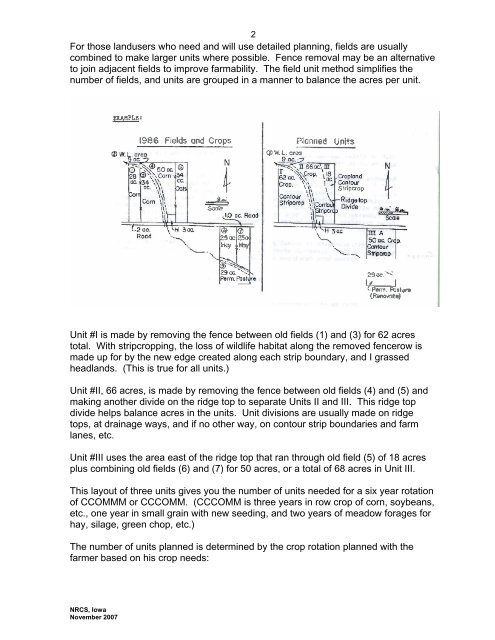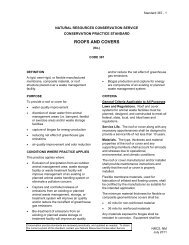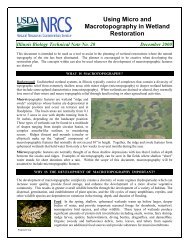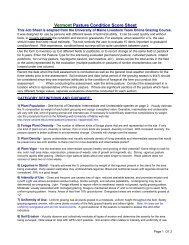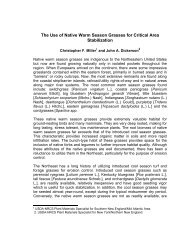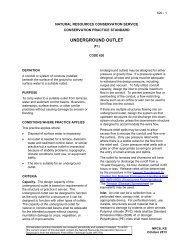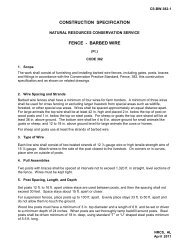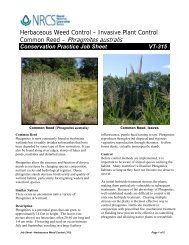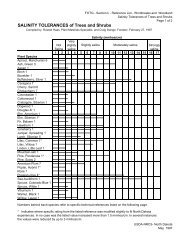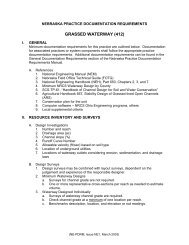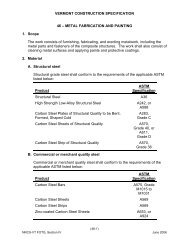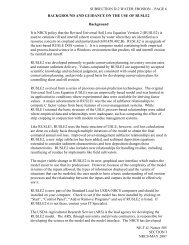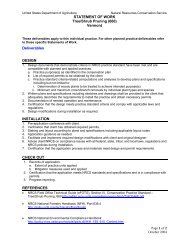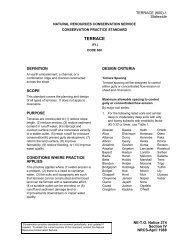technical notes - Field Office Technical Guide - US Department of ...
technical notes - Field Office Technical Guide - US Department of ...
technical notes - Field Office Technical Guide - US Department of ...
Create successful ePaper yourself
Turn your PDF publications into a flip-book with our unique Google optimized e-Paper software.
2<br />
For those landusers who need and will use detailed planning, fields are usually<br />
combined to make larger units where possible. Fence removal may be an alternative<br />
to join adjacent fields to improve farmability. The field unit method simplifies the<br />
number <strong>of</strong> fields, and units are grouped in a manner to balance the acres per unit.<br />
Unit #I is made by removing the fence between old fields (1) and (3) for 62 acres<br />
total. With stripcropping, the loss <strong>of</strong> wildlife habitat along the removed fencerow is<br />
made up for by the new edge created along each strip boundary, and I grassed<br />
headlands. (This is true for all units.)<br />
Unit #II, 66 acres, is made by removing the fence between old fields (4) and (5) and<br />
making another divide on the ridge top to separate Units II and III. This ridge top<br />
divide helps balance acres in the units. Unit divisions are usually made on ridge<br />
tops, at drainage ways, and if no other way, on contour strip boundaries and farm<br />
lanes, etc.<br />
Unit #III uses the area east <strong>of</strong> the ridge top that ran through old field (5) <strong>of</strong> 18 acres<br />
plus combining old fields (6) and (7) for 50 acres, or a total <strong>of</strong> 68 acres in Unit III.<br />
This layout <strong>of</strong> three units gives you the number <strong>of</strong> units needed for a six year rotation<br />
<strong>of</strong> CCOMMM or CCCOMM. (CCCOMM is three years in row crop <strong>of</strong> corn, soybeans,<br />
etc., one year in small grain with new seeding, and two years <strong>of</strong> meadow forages for<br />
hay, silage, green chop, etc.)<br />
The number <strong>of</strong> units planned is determined by the crop rotation planned with the<br />
farmer based on his crop needs:<br />
NRCS, Iowa<br />
November 2007


